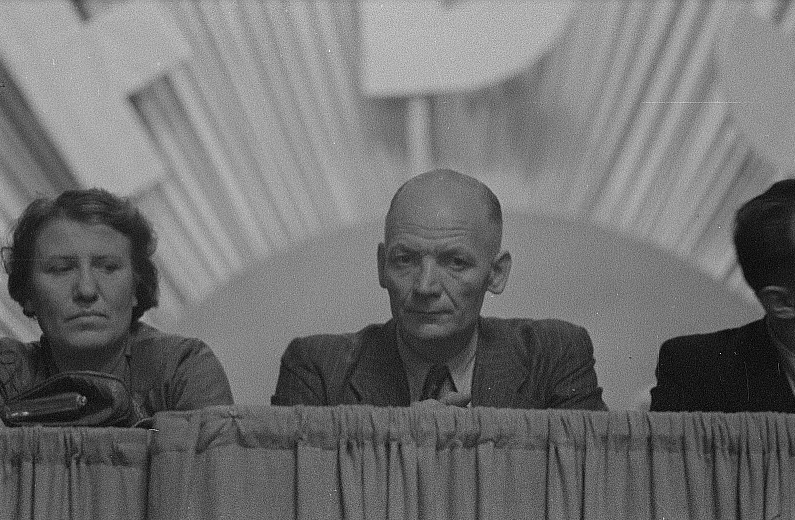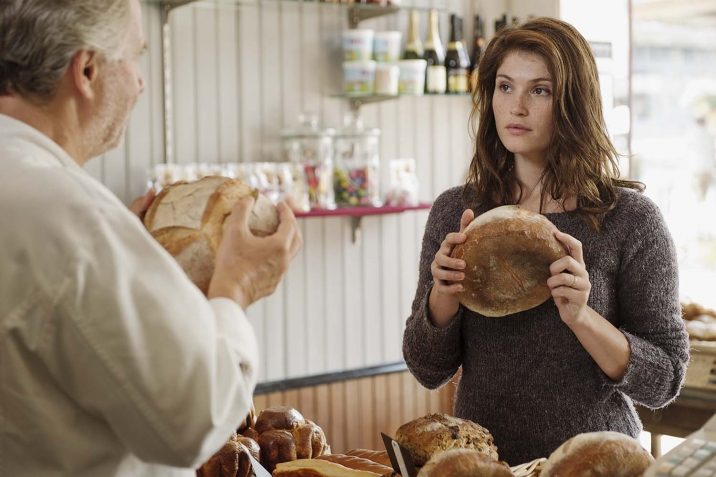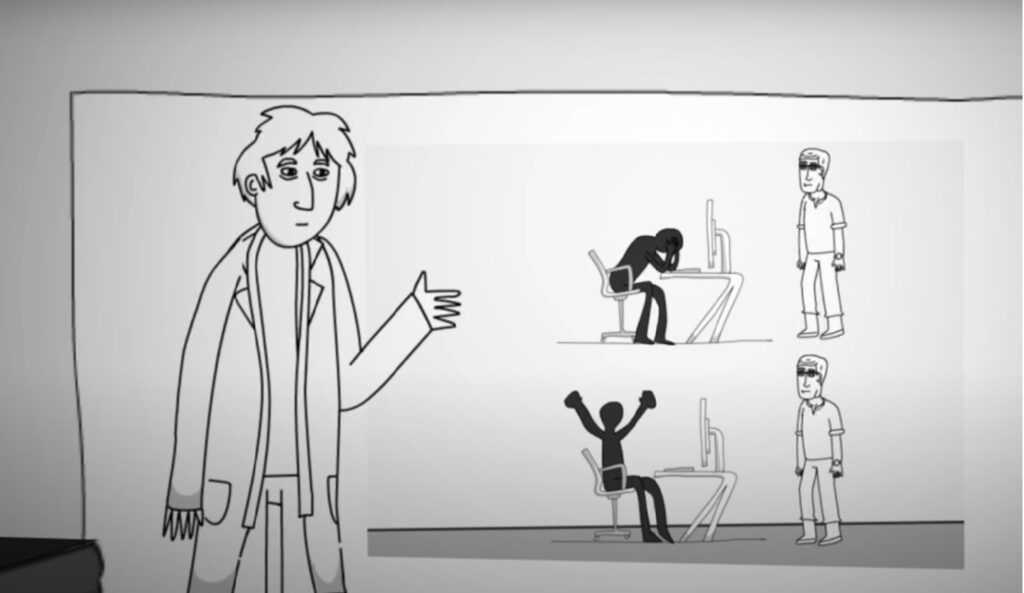
Observations on Work, Employment & Education
Labour Struggles on Screen: Stéphane Brizé & Vincent Lindon’s Work Trilogy
Stéphane Brizé has a long track record of producing and directing provocative films about work. The trilogy with Vincent Lindon stands out among these: “The Measure of a Man” (“La loi du marché”, 2015), “At War” (“En guerre”, 2018) and “Another World” (“Un autre monde”, 2021), each depict modern capitalist work practices from a different perspective – with Lindon being a jobseeker, a union leader and a corporate group director in turn – but the overarching message is clear: no one is comfortable in post-industrial capitalism.
The fact that Vincent Lindon plays all three roles is of vital importance; it highlights the unpredictability of human fate and of modern labour markets: the same person presenting annual performance metrics at a shareholder conference one day could easily be out of a job the next. Instead of recounting their storylines, it is more valuable to identify different perspectives on and reactions to the shared challenges that life presents for each of these three characters.
First, Lindon experiences the highs and lows of marriage in all three films, but social class and societal expectations become more restrictive as he becomes a more prominent actor on the corporate stage: as a job-seeker, he receives the warm support of his wife who motivates him to advance in the laborious labyrinthine job search although she is by no means an expert. As a union leader he is already divorced but maintains a solid relationship with his daughter. As a company director he has a wall full of tender family pictures, but this opening shot in “Another World” contrasts starkly with the vindictive exchange between two divorce lawyers: “My client has already accepted the divorce; hence one cannot impose everything on him and he cannot accept everything.” – “For my client, her daily life has become hell.”[1] And then, suddenly, a bit of humanity bursts into the legal protocol, as the wife speaks directly at her husband: “At the time, I didn’t sign for you to bring all your problems back home!”“ This reference to their prenup, a classic upper-class device to separate and give to each party what they contributed, suggests that the responsibility of caring for their disabled child and smiling politely at corporate events was never recognised.
Second, all protagonists have a child. The children also reflect their parent’s status: the blue collar labourer has a son with a physical disability, whereas the white collar ‘knowledge worker’ has a child with a cognitive disability. There are multiple scenes with these children present directly or indirectly (via photos or videos), but the genuine feeling of a happy carefree family emerges only once in each film: the dancing scene in „ The Measure of a Man ” , when the parents return from their weekly salsa class and then dance with the disabled child in their cramped living room; the frisbee scene in “Another World”, when the father finally takes time off to visit his son in his psychiatric clinic and plays with him in the garden; and the hospital visit in “At War”, which Lindon makes to his daughter, who has just had a baby in a different town. In all three scenes, the music becomes quieter until it becomes silent. Pure human emotions don’t need any supporting soundtrack.
Third, all families consider moving house in order to respond to their changing needs. Their external move reflects the internal discomfort with their situation, their duties and constraints: the CEO’s family moves into a huge, modern house with a glass façade (to simulate transparency) in order to visually consolidate the father’s professional advancement and buy some external calm in their carefully manicured garden – here, behind the concrete entrance and the security cameras, there are some moments of peace. The poorer family in „The Measure of a Man” are asked by their bank manager whether they would be willing to sell their flat to mitigate their cashflow problems and Lindon rejects the proposition emphatically: „That would be as if…as if everything we’ve done…doesn’t lead anywhere, all for nothing! Being a renter at my age…just: no!”.[2] The bank manager initially accepts, but then keeps upselling: “In your precarious situation, have you considered insurance, life insurance?”. She already foresees an indebted customer – hence the additional squeeze. Instead of selling their flat, the family eventually tries to sell their camping van by the seaside. A couple who saw the listing comes to view the van, they like it and then try to haggle down the price. Lindon first refuses the negotiation outright, then gets very agitated as numbers are expressed: the van was priced at 7,000 Euros and now that the potential viewers have seen it (and measured the area with their own devices – scam!?), they suggest 6,200 (Lindon is shocked), then 6,300 (still shocked), then he storms out as the haggling continues. He had offered to ’haggle-down’, but in his proud imagination he had foreseen “at most 6,900” as the acceptable baseline. That shows: “The Measure of a Man”. In “At War”, by contrast there is no home at all, just in-between places. Workbenches, hospitals, supermarkets. There is no site of respite in the flaming factory of life.
Fourth, the use of technology in all three films multiplies the eyes watching each other, much more than the video interview which the jobseeker Lindon undergoes in his living room (which Brizé has described as “violent” and “disrespectful” despite the fact that we never get to see the interviewer) are the surveillance cameras that are present in all of the films. When Lindon is a security guard in “A Measure of a Man”, each customer and each isle can be observed from the Foucauldian panopticon of the control room. The rhythm of beeping tills when products are scanned becomes louder and louder until human faces disappear in the blur…until the cashier is observed making a mistake. She swipes her own loyalty card to reduce customers’ bills if they forget theirs or don’t have any at all. This small act of human kindness leads to an intense interrogation, in which the cashier initially denies any impropriety until the overseer asks Lindon to play the clip recording the “error” and “injustice”, as the overseer calls it. The overseer makes one low-level employee expose another low-level employee, discrediting the trusting class solidarity that is visible between them. Loyalty points are only for loyal customers with a loyalty card. For the corporation this thinking should be innate, but the cashier defends herself by playing into the employer’s stereotype of her as a silly, uneducated woman: “We didn’t receive any training on loyalty cards, no training on loyalty”. [3]
Finally, all films experiment with the concept, the identification and the location of responsibility. In “Another World” the acting is very good, even if Lindon seems a bit too rough for the role of a rehearsed, polished, impersonal CEO. This CEO takes performance enhancing drugs in the bathroom, washes his hands as meticulously as possible after firing people and then takes sleeping pills to numb his conscience in the evening. Everything seems artificial. The relationship with his pale, tense wife (perfectly cast with the Breton Sandrine Kiberlain) has also been reduced to practical, transactional conversations. When the wife asks repeatedly when they could go on holiday, Lindon says, “I told you in advance that, as long as the group hasn’t decided, it will be difficult”. The husband cannot decide as long as he is in the company’s grip. Kiberlain responds perfectly to expose the transfer of responsibility: “The group, the group… and what about me? I am married to the Elsonn group!”.[4]
The group guides all decisions, even the most painful ones. The group is profitable. Why fire people when the business is profitable? Because it may not be profitable enough. The Elsonn group made a profit of 3.5 % in the year preceding the strike – 14 million Euros – and yet, the target was 7 %. If the annual performance was below target, all employees must get ready for cuts. When the CEO is asked directly why jobs must be cut even though there was an increase in shareholder value, Lindon responds like a brainwashed soldier: “You raise a question to which the group has neither asked us to respond, nor to think about.”[5] No responding, no thinking. No human intervention is permitted in the unstoppable logic of capitalist growth.
Lindon is excellent in all three films, but his performance in “At War” is outstanding. The broad frame, the rough voice and the volcanic fire in his eyes make the whole film sizzle with energy. The Brecht quote at the beginning of the film seems to have infused his whole body: “Those who fight, may lose; but those who don’t fight at all have already lost.”[6] Any attempt to fight is commendable in principle, but the methods vary widely. The union leader makes clear that the big corporations, no matter their disagreements, are sticking together. At the beginning, the Perrin Industries employees are united too – one ’cadre’ (university-educated knowledge worker) even joins the manual workers in suit and tie amidst the flaming factory. As the strike continues, however, ‘factionalism’ appears. A subgroup has been talking to the management about a settlement payment to end the gridlock. They even managed to haggle the initial offer of the group up from 17,000 to 25,000 Euros per employee – a successful fight of sorts. Some are impressed and find the offer attractive; others are sceptical of this submission to “bribery” and expose the trick: „I don’t fight for the settlement. I fight for a cheque which we will all get every single month!” “[7] Importantly, in French the special settlement is called “la supralégale” – an agreement not just outside, but above the law.
This summarises the power dynamics in all three films: the law provides a framework for all, but those in power can always find ways to circumvent it. This precarity of the status of human beings in capitalism – rightsholder? master? servant? victim? – is at the heart of Brizé’s trilogy.
Dr. Astrid Hampe-Nathaniel is a policy consultant with a focus on education and labour market policies. She has lived in Austria, France, the UK and the US, which allowed her to see different forms of capitalism firsthand.
[1] “Monsieur a déjà accepté le divorce. Du coup, on ne peut pas tout lui imposer et il ne peut pas tout accepter.” – “Ma cliente…son quotidien est devenu un enfer” A l’époque, je n’ai pas signé pour que tu ramènes tous tes problèmes à la maison !“
[2] “Ça serait comme si… comme si tout ce qu’on avait fait, ça sert à rien! A mon âge, être locataire – c’est… non!“
[3] “On n’a pas reçu de formation sur les cartes de fidélité, pas de formation sur la fidélité”.
[4] “Le groupe, le groupe… et moi ? Je suis mariée au groupe Elsonn!”
[5] “Tu poses une question à laquelle le groupe ne nous a demandé ni de répondre, ni de réfléchir.”
[6] “Wer kämpft, kann verlieren; aber wer gar nicht kämpft, der hat bereits verloren”.
[7] Je ne me bats pas pour la supralégale! Je me bats pour un chèque qu‘on va tous toucher chaque mois!”.
La Loi du marché /The Measure of a Man) (FR 2015), Stéphane Brizé, Trailer
En guerre / At War (2018 FR), Stéphane Brizé, Trailer
An autre monde / Another World (2021, FR), Stéphane Brizé, Trailer
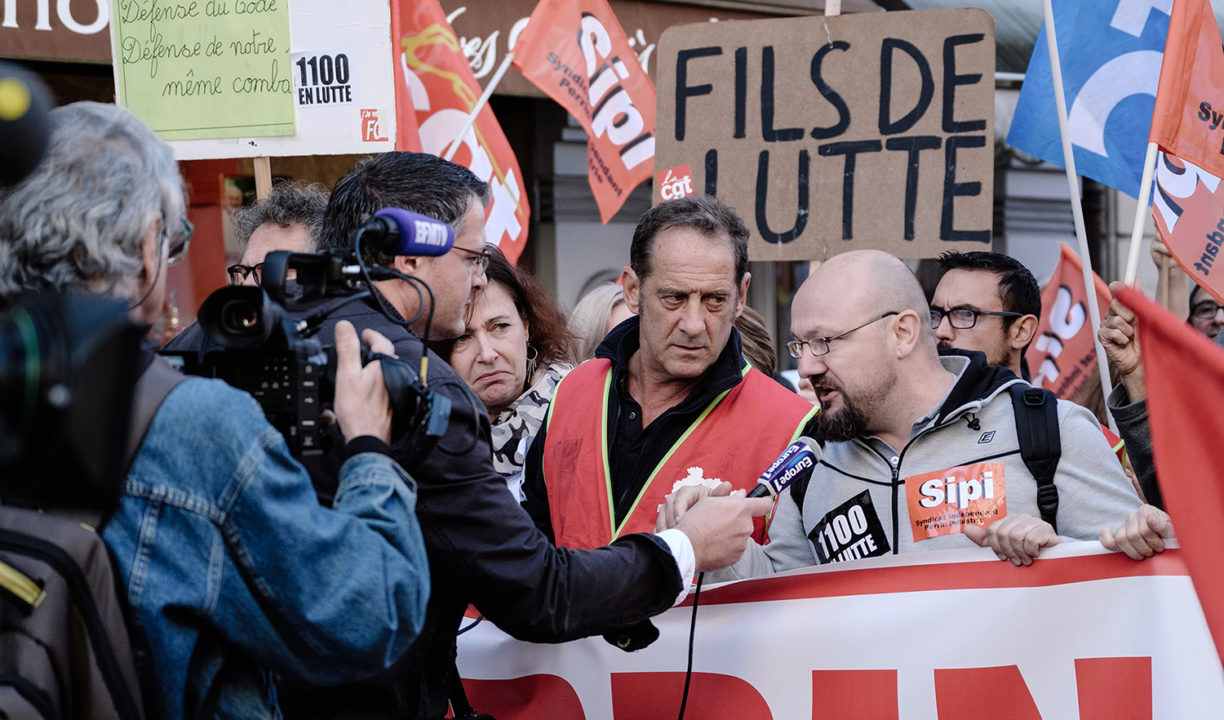
At War (2018), Filmstill
© Nord-Ouest Films

At War (2018), Filmstill
© Nord-Ouest Films
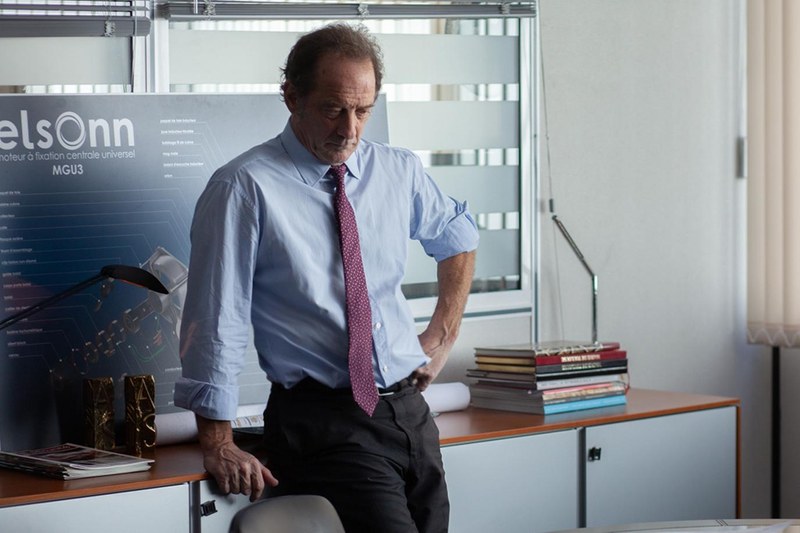
Another World (2021), Filmstill
© Nord-Ouest Films
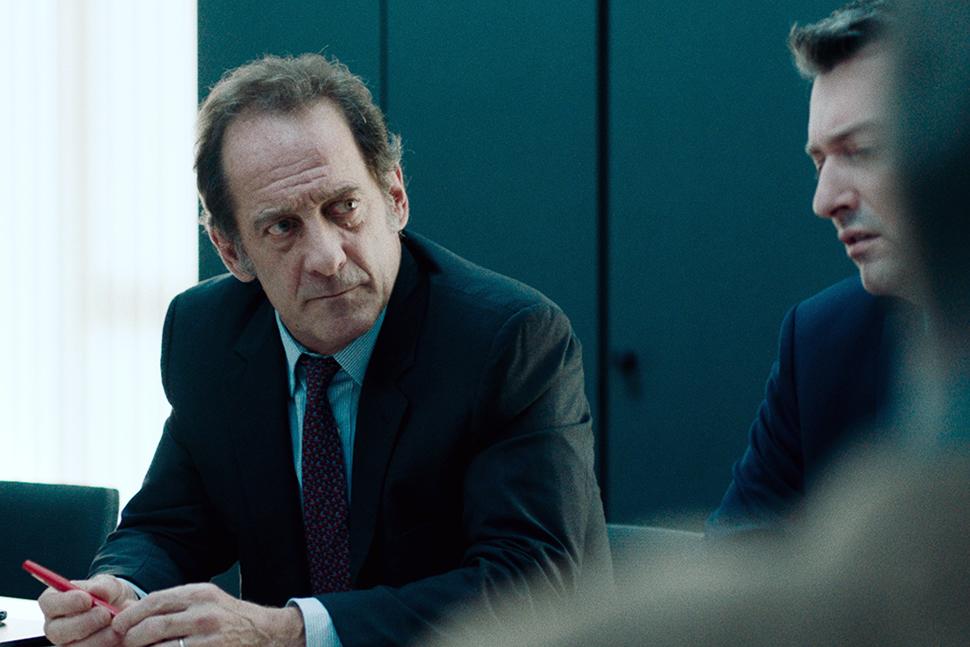
Another World (2021), Filmstill
© Nord-Ouest Films
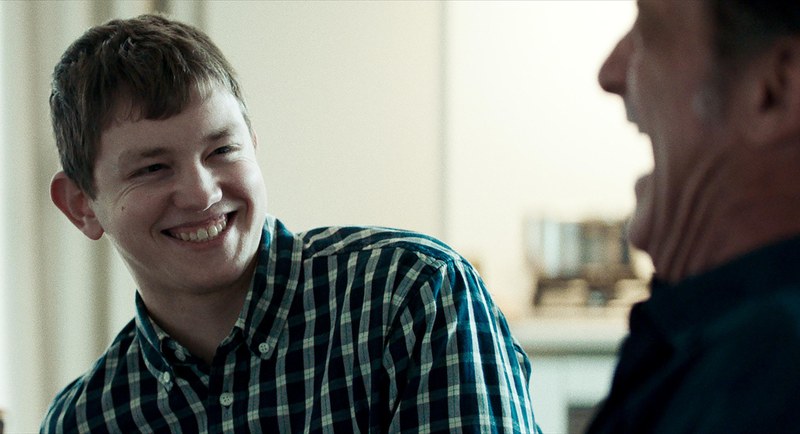
Another World (2021), Filmstill
© Nord-Ouest Films

he Measure of a Man (2015), Filmstill
© Nord-Ouest Films
Labour Struggles on Screen: Stéphane Brizé & Vincent Lindon’s Work Trilogy
Stéphane Brizé has a long track record of producing and directing provocative films about work. The trilogy with Vincent Lindon stands out among these: “The Measure of a Man” (“La loi du marché”, 2015), “At War” (“En guerre”, 2018) and “Another World” (“Un autre monde”, 2021), each depict modern capitalist work practices from a different perspective – with Lindon being a jobseeker, a union leader and a corporate group director in turn – but the overarching message is clear: no one is comfortable in post-industrial capitalism.
The fact that Vincent Lindon plays all three roles is of vital importance; it highlights the unpredictability of human fate and of modern labour markets: the same person presenting annual performance metrics at a shareholder conference one day could easily be out of a job the next. Instead of recounting their storylines, it is more valuable to identify different perspectives on and reactions to the shared challenges that life presents for each of these three characters.
First, Lindon experiences the highs and lows of marriage in all three films, but social class and societal expectations become more restrictive as he becomes a more prominent actor on the corporate stage: as a job-seeker, he receives the warm support of his wife who motivates him to advance in the laborious labyrinthine job search although she is by no means an expert. As a union leader he is already divorced but maintains a solid relationship with his daughter. As a company director he has a wall full of tender family pictures, but this opening shot in “Another World” contrasts starkly with the vindictive exchange between two divorce lawyers: “My client has already accepted the divorce; hence one cannot impose everything on him and he cannot accept everything.” – “For my client, her daily life has become hell.”[1] And then, suddenly, a bit of humanity bursts into the legal protocol, as the wife speaks directly at her husband: “At the time, I didn’t sign for you to bring all your problems back home!”“ This reference to their prenup, a classic upper-class device to separate and give to each party what they contributed, suggests that the responsibility of caring for their disabled child and smiling politely at corporate events was never recognised.
Second, all protagonists have a child. The children also reflect their parent’s status: the blue collar labourer has a son with a physical disability, whereas the white collar ‘knowledge worker’ has a child with a cognitive disability. There are multiple scenes with these children present directly or indirectly (via photos or videos), but the genuine feeling of a happy carefree family emerges only once in each film: the dancing scene in „ The Measure of a Man ” , when the parents return from their weekly salsa class and then dance with the disabled child in their cramped living room; the frisbee scene in “Another World”, when the father finally takes time off to visit his son in his psychiatric clinic and plays with him in the garden; and the hospital visit in “At War”, which Lindon makes to his daughter, who has just had a baby in a different town. In all three scenes, the music becomes quieter until it becomes silent. Pure human emotions don’t need any supporting soundtrack.
Third, all families consider moving house in order to respond to their changing needs. Their external move reflects the internal discomfort with their situation, their duties and constraints: the CEO’s family moves into a huge, modern house with a glass façade (to simulate transparency) in order to visually consolidate the father’s professional advancement and buy some external calm in their carefully manicured garden – here, behind the concrete entrance and the security cameras, there are some moments of peace. The poorer family in „The Measure of a Man” are asked by their bank manager whether they would be willing to sell their flat to mitigate their cashflow problems and Lindon rejects the proposition emphatically: „That would be as if…as if everything we’ve done…doesn’t lead anywhere, all for nothing! Being a renter at my age…just: no!”.[2] The bank manager initially accepts, but then keeps upselling: “In your precarious situation, have you considered insurance, life insurance?”. She already foresees an indebted customer – hence the additional squeeze. Instead of selling their flat, the family eventually tries to sell their camping van by the seaside. A couple who saw the listing comes to view the van, they like it and then try to haggle down the price. Lindon first refuses the negotiation outright, then gets very agitated as numbers are expressed: the van was priced at 7,000 Euros and now that the potential viewers have seen it (and measured the area with their own devices – scam!?), they suggest 6,200 (Lindon is shocked), then 6,300 (still shocked), then he storms out as the haggling continues. He had offered to ’haggle-down’, but in his proud imagination he had foreseen “at most 6,900” as the acceptable baseline. That shows: “The Measure of a Man”. In “At War”, by contrast there is no home at all, just in-between places. Workbenches, hospitals, supermarkets. There is no site of respite in the flaming factory of life.
Fourth, the use of technology in all three films multiplies the eyes watching each other, much more than the video interview which the jobseeker Lindon undergoes in his living room (which Brizé has described as “violent” and “disrespectful” despite the fact that we never get to see the interviewer) are the surveillance cameras that are present in all of the films. When Lindon is a security guard in “A Measure of a Man”, each customer and each isle can be observed from the Foucauldian panopticon of the control room. The rhythm of beeping tills when products are scanned becomes louder and louder until human faces disappear in the blur…until the cashier is observed making a mistake. She swipes her own loyalty card to reduce customers’ bills if they forget theirs or don’t have any at all. This small act of human kindness leads to an intense interrogation, in which the cashier initially denies any impropriety until the overseer asks Lindon to play the clip recording the “error” and “injustice”, as the overseer calls it. The overseer makes one low-level employee expose another low-level employee, discrediting the trusting class solidarity that is visible between them. Loyalty points are only for loyal customers with a loyalty card. For the corporation this thinking should be innate, but the cashier defends herself by playing into the employer’s stereotype of her as a silly, uneducated woman: “We didn’t receive any training on loyalty cards, no training on loyalty”. [3]
Finally, all films experiment with the concept, the identification and the location of responsibility. In “Another World” the acting is very good, even if Lindon seems a bit too rough for the role of a rehearsed, polished, impersonal CEO. This CEO takes performance enhancing drugs in the bathroom, washes his hands as meticulously as possible after firing people and then takes sleeping pills to numb his conscience in the evening. Everything seems artificial. The relationship with his pale, tense wife (perfectly cast with the Breton Sandrine Kiberlain) has also been reduced to practical, transactional conversations. When the wife asks repeatedly when they could go on holiday, Lindon says, “I told you in advance that, as long as the group hasn’t decided, it will be difficult”. The husband cannot decide as long as he is in the company’s grip. Kiberlain responds perfectly to expose the transfer of responsibility: “The group, the group… and what about me? I am married to the Elsonn group!”.[4]
The group guides all decisions, even the most painful ones. The group is profitable. Why fire people when the business is profitable? Because it may not be profitable enough. The Elsonn group made a profit of 3.5 % in the year preceding the strike – 14 million Euros – and yet, the target was 7 %. If the annual performance was below target, all employees must get ready for cuts. When the CEO is asked directly why jobs must be cut even though there was an increase in shareholder value, Lindon responds like a brainwashed soldier: “You raise a question to which the group has neither asked us to respond, nor to think about.”[5] No responding, no thinking. No human intervention is permitted in the unstoppable logic of capitalist growth.
Lindon is excellent in all three films, but his performance in “At War” is outstanding. The broad frame, the rough voice and the volcanic fire in his eyes make the whole film sizzle with energy. The Brecht quote at the beginning of the film seems to have infused his whole body: “Those who fight, may lose; but those who don’t fight at all have already lost.”[6] Any attempt to fight is commendable in principle, but the methods vary widely. The union leader makes clear that the big corporations, no matter their disagreements, are sticking together. At the beginning, the Perrin Industries employees are united too – one ’cadre’ (university-educated knowledge worker) even joins the manual workers in suit and tie amidst the flaming factory. As the strike continues, however, ‘factionalism’ appears. A subgroup has been talking to the management about a settlement payment to end the gridlock. They even managed to haggle the initial offer of the group up from 17,000 to 25,000 Euros per employee – a successful fight of sorts. Some are impressed and find the offer attractive; others are sceptical of this submission to “bribery” and expose the trick: „I don’t fight for the settlement. I fight for a cheque which we will all get every single month!” “[7] Importantly, in French the special settlement is called “la supralégale” – an agreement not just outside, but above the law.
This summarises the power dynamics in all three films: the law provides a framework for all, but those in power can always find ways to circumvent it. This precarity of the status of human beings in capitalism – rightsholder? master? servant? victim? – is at the heart of Brizé’s trilogy.
Dr. Astrid Hampe-Nathaniel is a policy consultant with a focus on education and labour market policies. She has lived in Austria, France, the UK and the US, which allowed her to see different forms of capitalism firsthand.
[1] “Monsieur a déjà accepté le divorce. Du coup, on ne peut pas tout lui imposer et il ne peut pas tout accepter.” – “Ma cliente…son quotidien est devenu un enfer” A l’époque, je n’ai pas signé pour que tu ramènes tous tes problèmes à la maison !“
[2] “Ça serait comme si… comme si tout ce qu’on avait fait, ça sert à rien! A mon âge, être locataire – c’est… non!“
[3] “On n’a pas reçu de formation sur les cartes de fidélité, pas de formation sur la fidélité”.
[4] “Le groupe, le groupe… et moi ? Je suis mariée au groupe Elsonn!”
[5] “Tu poses une question à laquelle le groupe ne nous a demandé ni de répondre, ni de réfléchir.”
[6] “Wer kämpft, kann verlieren; aber wer gar nicht kämpft, der hat bereits verloren”.
[7] Je ne me bats pas pour la supralégale! Je me bats pour un chèque qu‘on va tous toucher chaque mois!”.
La Loi du marché /The Measure of a Man) (FR 2015), Stéphane Brizé, Trailer
En guerre / At War (2018 FR), Stéphane Brizé, Trailer
An autre monde / Another World (2021, FR), Stéphane Brizé, Trailer

At War (2018), Filmstill
© Nord-Ouest Films

At War (2018), Filmstill
© Nord-Ouest Films

Another World (2021), Filmstill
© Nord-Ouest Films

Another World (2021), Filmstill
© Nord-Ouest Films

Another World (2021), Filmstill
© Nord-Ouest Films

he Measure of a Man (2015), Filmstill
© Nord-Ouest Films

Superpowers on the job
What to do with superhuman abilities on the job? Superheroes don't give much information on this. A troll in one of the most extraordinary Swedish films of recent years (Border, 2018), on the other hand does.
When pictures of economy went into motion
A new book introduces us to the important epistemologist Michael Polanyi as a didactician of economics and recalls his educational film "Unemployment and Money" (1940), which is still worth seeing today.
Adolf Hennecke — Hero of the Battle of Production
Where labour and the heroic merge: the glorification of labour in real socialism.
Finding and Cultivating the Self in Hair: On the Wizardry of Hairdressers
The key to successfully creating a hairstyle is, of course, the hairdresser's skill. But the art of hair is not limited to instrumental skills, it also includes the 'culturality' of hair. A contemporary critique of a traditional profession.
The baker’s routine gestures: a professional ‘classic’?
In contemporary cinema, we often don’t question seemingly cliché images of bakers at work as seen in Antoine Fontaine's "Gemma Bovery" (2014) or Luke Jin's short film "La Boulangerie" (2017), but perhaps we should.
Essential Workers vs. Bullshit Jobs
How will the Covid-19 pandemic change the world of work? Will essential workers be more valued in the future or will ‘bullshit’ jobs continue to increase?

About this blog
By selecting a film or an image, this blog literally illustrates the vast sphere of work, employment & education in an open collection of academic, artistic and also anecdotal findings.
About us
Konrad Wakolbinger makes documentary films about work and life. Jörg Markowitsch does research on education and work. They are both based in Vienna. Information on guest authors can be found in their corresponding articles.
More about
Interested in more? Find recommendations on relevant festivals, film collections and literature here.
About this blog
With picking a film or an image, this blog literally illustrates the vast sphere of work, employment & education in an open collection of academic, artistic and also anecdotal findings.
About us
Konrad Wakolbinger makes documentary films about work and life. Jörg Markowitsch does research on education and work. We both work in Vienna. Information on guest authors can be found in their respective articles.
More about
Interested in more? Find recommendations on relevant festivals, film collections and literature here.




